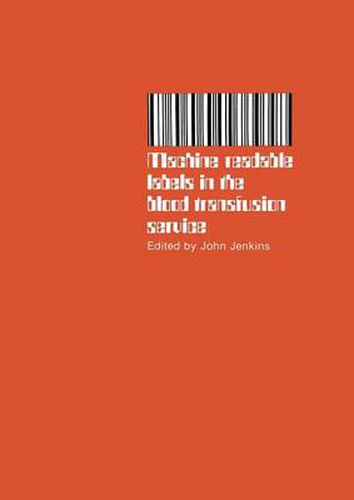Readings Newsletter
Become a Readings Member to make your shopping experience even easier.
Sign in or sign up for free!
You’re not far away from qualifying for FREE standard shipping within Australia
You’ve qualified for FREE standard shipping within Australia
The cart is loading…






This title is printed to order. This book may have been self-published. If so, we cannot guarantee the quality of the content. In the main most books will have gone through the editing process however some may not. We therefore suggest that you be aware of this before ordering this book. If in doubt check either the author or publisher’s details as we are unable to accept any returns unless they are faulty. Please contact us if you have any questions.
Dr W J Jenkins In 1977 when the Sheffield Transfusion Centre took delivery of the first GROUPAMATIC blood grouping machine in the UK it was equipped with a sample identification system involving complicated and expensive disposable punched cards. In fact, the cards were so expensive that Dr Wagstaff was unable to find the revenue to support the system. A year later, when Brentwood took delivery of a GROUPAMATIC, we were faced with the same problem, but by chance we heard that KONTRON was developing a laser scanning system for bar code labels and we were able to have our machine modified. Subsequently the Sheffield machine was altered to take the bar code scanner. At about the same time the Bristol Centre was helping TECHNICON with the development of the AUTO GROUPER C-16, and fortunately they decided on a laser reader of the same type for bar code identification. Thus there were three centres with the capability for reading bar codes on blood grouping machines and it became necessary to find someone to produce the bar code labels. There was only on~ printer in the UK who could produce labels to the required specification. To cut the costs of printing, and in the hope of avoiding a wide variation in codes, I invited representatives of centres interested in the problem to a meeting, where we set up what we called the Group of Six. This later became an official Working Party of the Regional Transfusion Directors.
$9.00 standard shipping within Australia
FREE standard shipping within Australia for orders over $100.00
Express & International shipping calculated at checkout
This title is printed to order. This book may have been self-published. If so, we cannot guarantee the quality of the content. In the main most books will have gone through the editing process however some may not. We therefore suggest that you be aware of this before ordering this book. If in doubt check either the author or publisher’s details as we are unable to accept any returns unless they are faulty. Please contact us if you have any questions.
Dr W J Jenkins In 1977 when the Sheffield Transfusion Centre took delivery of the first GROUPAMATIC blood grouping machine in the UK it was equipped with a sample identification system involving complicated and expensive disposable punched cards. In fact, the cards were so expensive that Dr Wagstaff was unable to find the revenue to support the system. A year later, when Brentwood took delivery of a GROUPAMATIC, we were faced with the same problem, but by chance we heard that KONTRON was developing a laser scanning system for bar code labels and we were able to have our machine modified. Subsequently the Sheffield machine was altered to take the bar code scanner. At about the same time the Bristol Centre was helping TECHNICON with the development of the AUTO GROUPER C-16, and fortunately they decided on a laser reader of the same type for bar code identification. Thus there were three centres with the capability for reading bar codes on blood grouping machines and it became necessary to find someone to produce the bar code labels. There was only on~ printer in the UK who could produce labels to the required specification. To cut the costs of printing, and in the hope of avoiding a wide variation in codes, I invited representatives of centres interested in the problem to a meeting, where we set up what we called the Group of Six. This later became an official Working Party of the Regional Transfusion Directors.